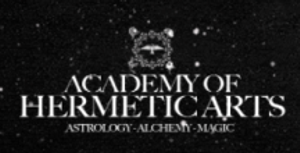Foreword
Note concerning sexist language, racial bias and rejected scientific concepts.
Elbert Benjamine, writing under the pen name C. C. Zain, wrote the 210 Brotherhood of Light Lessons between 1910 and 1934. As each lesson was completed it was published in serial lesson format and distributed to the members of The Brotherhood of Light. Eventually the serial lessons were formed into the twenty-one books or courses we have today. Until his passing on November 18, 1951, the books were continuously edited to incorporate new information or to correct errors. After his passing to the inner plane, per his request, the books were not to be altered although additional material could be added as new information was discovered. (See previous manuscript, “Preface”, written by Elbert Benjamine.) Because the material contained in the Twenty-One Brotherhood of Light Lessons reflects the cultural milieu of the early twentieth century, there will undoubtedly be notions and ideas that have since been replaced with more highly evolved thinking. He predicted it would be so.
Many of us today, and rightfully so, find ourselves put-off by the sexist language that was commonplace during that era, when the generic use of ‘man’ and ‘he’ (and ‘his’, ‘him’, ‘himself’) was commonly considered gender-neutral. There is also some unfortunate language that reflects the systemic racial and cultural bias that has, for generations, affected subliminal thinking impacting all cultures. And while much of the science incorporated into the Lessons is still valid today, there are several scientific references that are no longer accepted. One example of this is the reference to the Piltdown man, which was found to be a forgery in 1952, the year after his passing. Zain also refers to the “ether” as a medium for the transmission of electromagnetic waves. While he points out that the concept of the ether was discarded by the scientists of his day as superfluous, he nevertheless portrays it as a useful concept. Some of language used is archaic, and the sentence structure is complex, as was the custom in those days.
Despite these issues, there is a wealth of useful concepts and information. For example, his theory of Astral Substance and Thought Elements or Thought Cells present a new paradigm for explaining how the unconscious mind works and how astrological energies work in stimulating thought-elements. These theories shed new light on the Hermetic Axiom “as above, so below” and provide a unifying explanation for how the inner (formative) world interpenetrates and shapes the thoughts, feelings, emotions, and events of life. These new theories are profound and worthy of exploration and deep consideration.
Undoubtedly, we have much more to learn about astrology or the application of alchemy. Nevertheless, C. C. Zain’s concepts of Directed Thinking and Induced Emotion were ground-breaking. Magic seems to be morphing into modern day psychology and the recognized power of visualization, demonstration, and positive thinking.
When it comes to the basic quest for “truth,” none can compare. Zain advocates that we do not accept something as true because he stated it in The Brotherhood of Light Lessons. Rather, he challenges each of us to verify the information for ourselves. It is this philosophy of continuing to ask questions that leads to further discovery. He often repeats in the Lessons: “the truth shall set you free.” The quest for truth and a desire to liberate the human spirit keeps us moving forward in the journey of soul progression. As a philosophy of life, the integration of Hermetic tradition with modern science illuminates the path forward. The Brotherhood of Light Lessons shine as a bright beacon, elucidating the experiences of everyday life.
